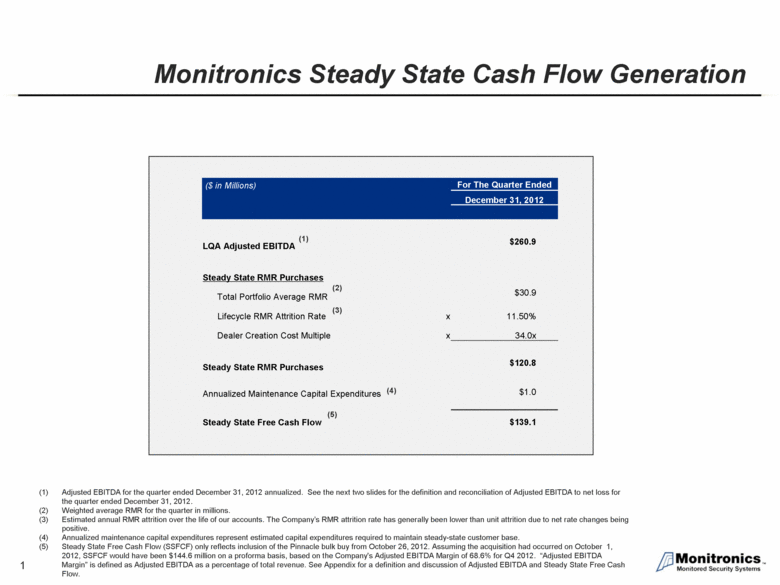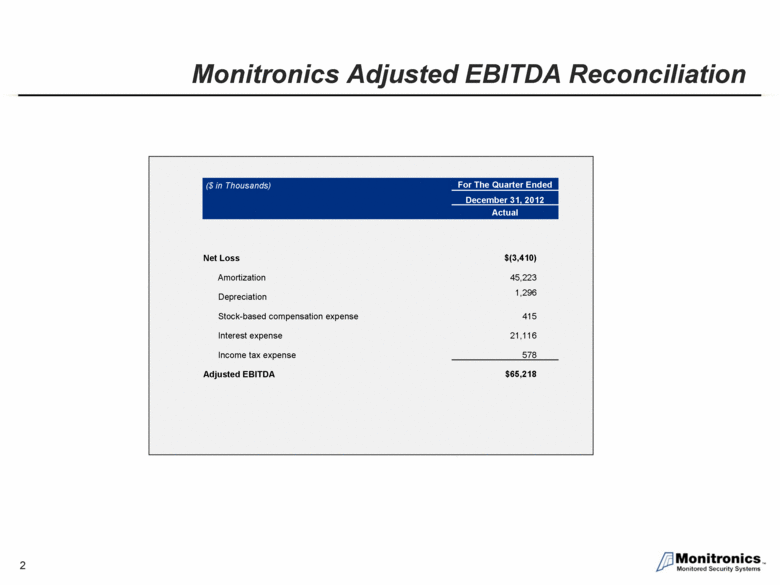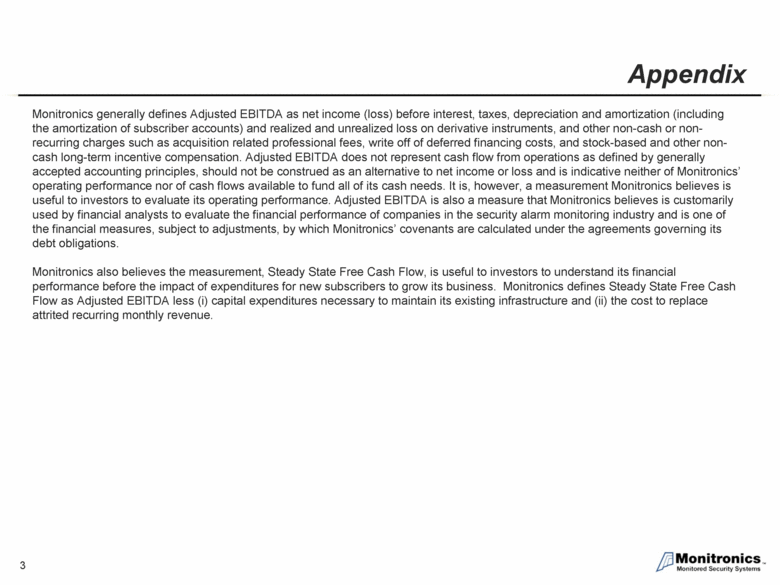Exhibit 99.1
| Monitronics Steady State Cash Flow Generation Adjusted EBITDA for the quarter ended December 31, 2012 annualized. See the next two slides for the definition and reconciliation of Adjusted EBITDA to net loss for the quarter ended December 31, 2012. Weighted average RMR for the quarter in millions. Estimated annual RMR attrition over the life of our accounts. The Company’s RMR attrition rate has generally been lower than unit attrition due to net rate changes being positive. Annualized maintenance capital expenditures represent estimated capital expenditures required to maintain steady-state customer base. Steady State Free Cash Flow (SSFCF) only reflects inclusion of the Pinnacle bulk buy from October 26, 2012. Assuming the acquisition had occurred on October 1, 2012, SSFCF would have been $144.6 million on a proforma basis, based on the Company's Adjusted EBITDA Margin of 68.6% for Q4 2012. “Adjusted EBITDA Margin” is defined as Adjusted EBITDA as a percentage of total revenue. See Appendix for a definition and discussion of Adjusted EBITDA and Steady State Free Cash Flow. ($ in Millions) For The Quarter Ended December 31, 2012 LQA Adjusted EBITDA $260.9 Steady State RMR Purchases Total Portfolio Average RMR $30.9 Lifecycle RMR Attrition Rate x 11.50% Dealer Creation Cost Multiple x 34.0x Steady State RMR Purchases $120.8 Annualized Maintenance Capital Expenditures $1.0 Steady State Free Cash Flow $139.1 (1) (2) (3) (4) (5) |
| Monitronics Adjusted EBITDA Reconciliation ($ in Thousands) For The Quarter Ended December 31, 2012 Actual Net Loss $(3,410) Amortization 45,223 Depreciation 1,296 Stock-based compensation expense 415 Interest expense 21,116 Income tax expense 578 Adjusted EBITDA $65,218 |
| Appendix Monitronics generally defines Adjusted EBITDA as net income (loss) before interest, taxes, depreciation and amortization (including the amortization of subscriber accounts) and realized and unrealized loss on derivative instruments, and other non-cash or non-recurring charges such as acquisition related professional fees, write off of deferred financing costs, and stock-based and other non-cash long-term incentive compensation. Adjusted EBITDA does not represent cash flow from operations as defined by generally accepted accounting principles, should not be construed as an alternative to net income or loss and is indicative neither of Monitronics’ operating performance nor of cash flows available to fund all of its cash needs. It is, however, a measurement Monitronics believes is useful to investors to evaluate its operating performance. Adjusted EBITDA is also a measure that Monitronics believes is customarily used by financial analysts to evaluate the financial performance of companies in the security alarm monitoring industry and is one of the financial measures, subject to adjustments, by which Monitronics’ covenants are calculated under the agreements governing its debt obligations. Monitronics also believes the measurement, Steady State Free Cash Flow, is useful to investors to understand its financial performance before the impact of expenditures for new subscribers to grow its business. Monitronics defines Steady State Free Cash Flow as Adjusted EBITDA less (i) capital expenditures necessary to maintain its existing infrastructure and (ii) the cost to replace attrited recurring monthly revenue. |


